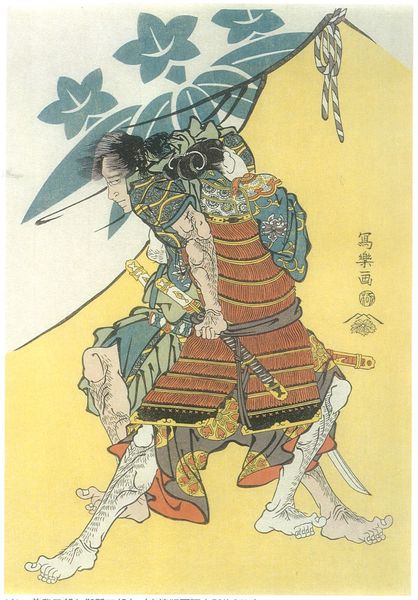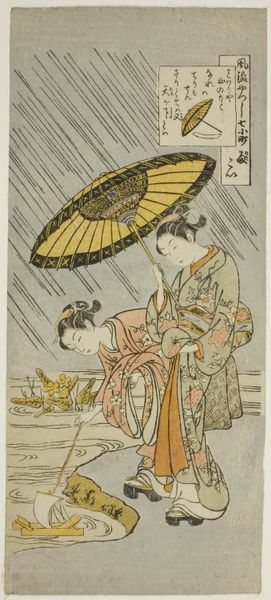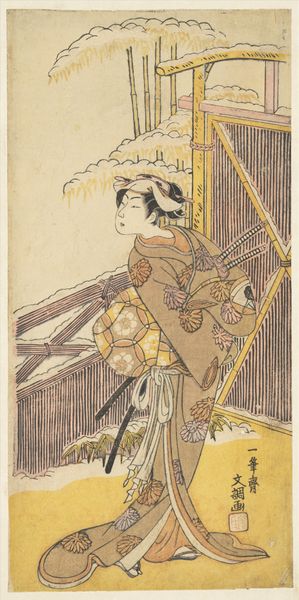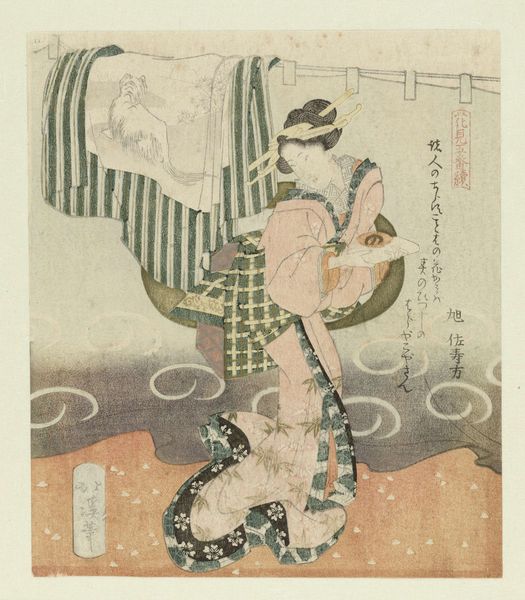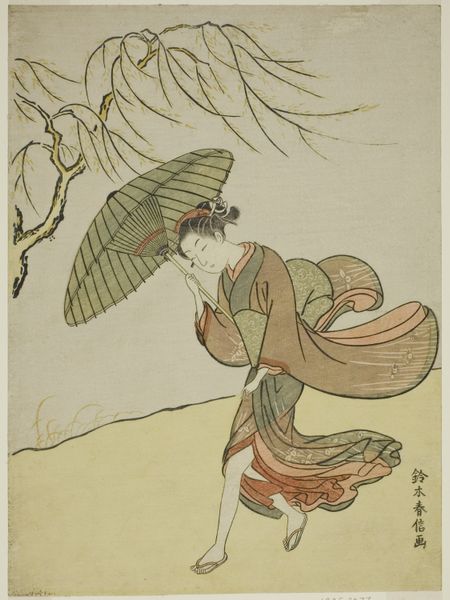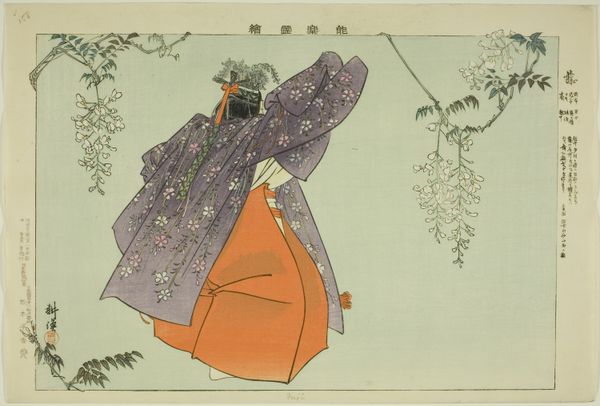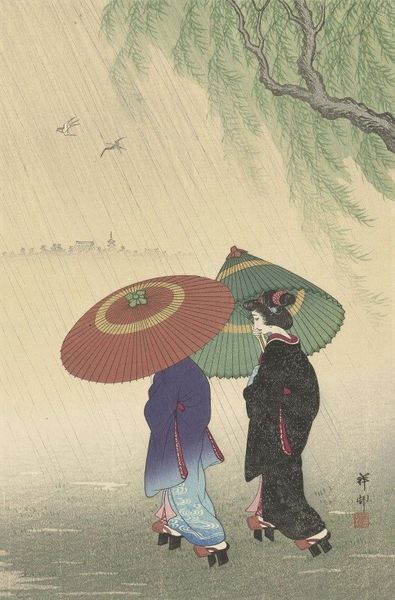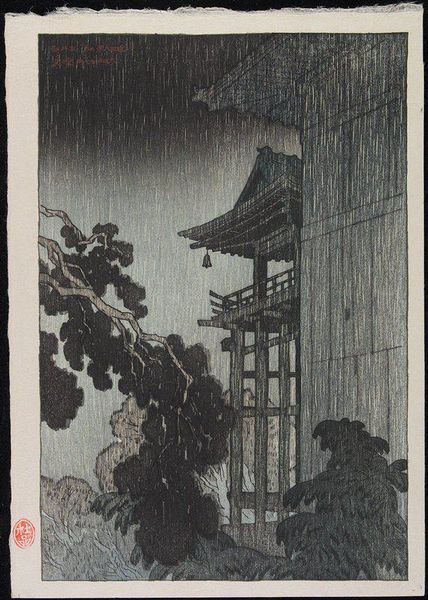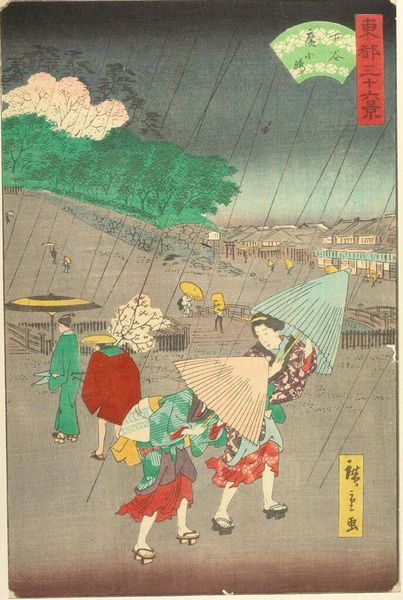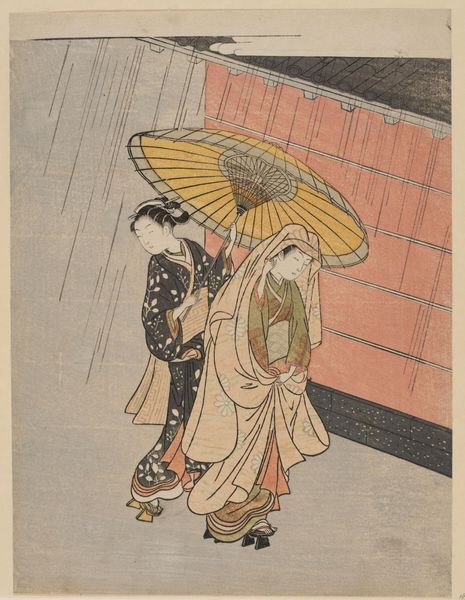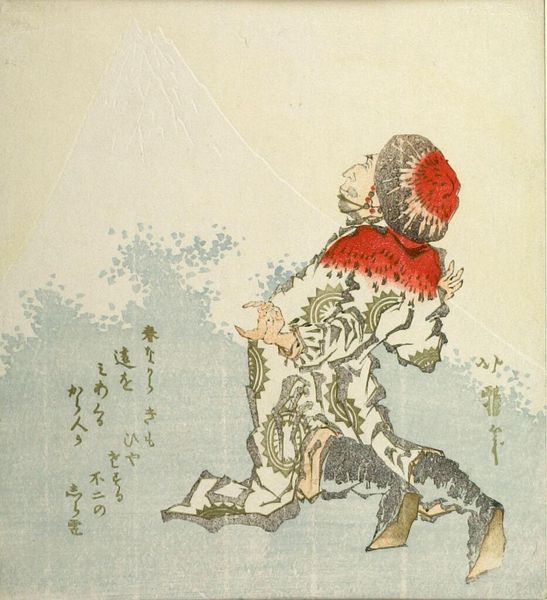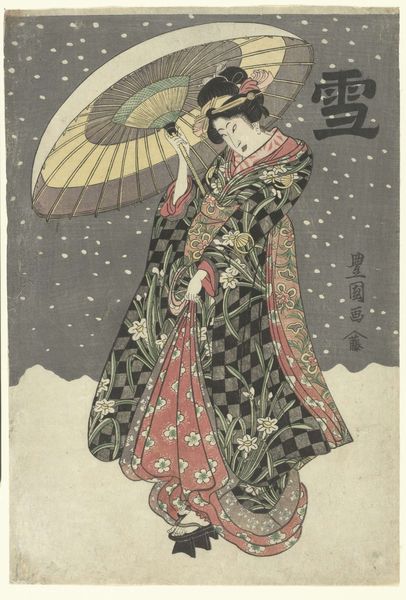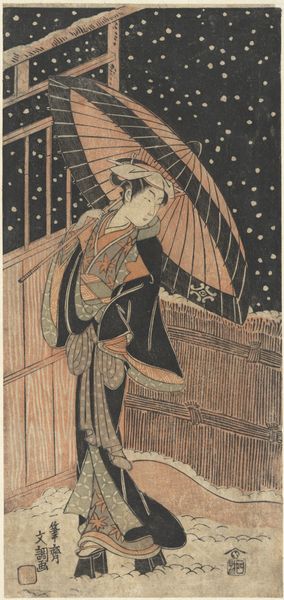
Copyright: Public Domain: Artvee
Curator: I'm struck immediately by the poignancy of this scene. A child huddled beneath a giant umbrella… the downpour almost a physical entity in the frame. It evokes such a sense of cozy solitude. Editor: Indeed. What you are describing is captured beautifully in Helen Hyde's woodblock print, “The Family Umbrella,” created in 1915. Hyde, an American artist who spent much of her career in Japan, masterfully blends Western sensibilities with the traditional Japanese ukiyo-e style. Curator: You know, there’s a lovely awkwardness to the composition—that oversized umbrella, almost comically large for the child. It lends the whole scene a gentle humor, despite the dreary weather. Almost like a cartoon. Do you see what I mean? Editor: Absolutely, and it points to some interesting observations on cultural representation and the artist’s position as an outsider. Here, we see a fusion of cultural motifs, echoing the dynamic exchange between East and West during the early 20th century. Hyde appropriates Japanese aesthetics but perhaps filters it through a Western gaze, creating an intriguing hybridity. The subject, seemingly Asian, further complicates her cultural perspective as an expatriate American artist depicting foreign cultural subjects. Curator: That hybridity sings in her technique, doesn’t it? Look at how the rain is rendered. It’s not just rain; it’s an event. Those diagonal strokes are so precise, each one given so much attention— it’s meditative. She’s clearly fascinated by these printing methods! Editor: The attention to detail you observe invites discourse on labor and production in art. Ukiyo-e prints were collaborative efforts, demanding the work of skilled artisans in carving and printing. We must reflect on how Hyde negotiated this process, and how that affected the reception and market value of her work. How does her individual authorship interface with these collective modes of production, especially as a woman navigating what were, at that time, fairly patriarchal cultural systems? Curator: I find it heartwarming, the notion of this single print encompassing all this depth of culture and historical significance and technical virtuosity. It truly feels like looking into a portal to another era. Editor: "The Family Umbrella," prompts us to engage in a more critical reflection on transcultural artistic practices and power dynamics—in historical contexts and as we contemplate artwork created across cultures today. It makes the rain outside a bit more complicated, too, no?
Comments
No comments
Be the first to comment and join the conversation on the ultimate creative platform.
